In today’s digital era, receiving an Indian OTP (One-Time Password) has become a common barrier for users trying to verify their accounts on apps or websites. Whether you’re an expat, marketer, or developer testing Indian-based services, you’ve likely encountered this message: “Enter your Indian number to receive OTP.”
From e-commerce platforms like Flipkart and Amazon to banking apps and social media sites, many require an Indian number to complete registration. But what if you’re outside India or simply prefer not to share your personal SIM card online? That’s where a virtual Indian number for OTP verification becomes your most practical tool.
In this guide, we’ll explore why Indian OTPs are so important, what problems users face when trying to receive them, and how LegitSMS.com offers a secure, simple, and cost-effective solution.
Why Everyone Suddenly Needs an Indian OTP
India’s massive digital economy means nearly every app or service requires mobile verification. Here’s why Indian OTPs are in such high demand:
1. Accessing India’s Digital Services
India is home to over 700 million smartphone users, with platforms like Paytm, PhonePe, Hotstar, and Zomato leading the way. Each of these services uses OTP verification for security. Without a local number, you can’t even create an account.
2. Online Businesses and Marketing
Marketers and entrepreneurs need Indian numbers for testing SMS campaigns, managing customer accounts, and running WhatsApp Business setups. A virtual Indian number makes these activities faster and more scalable.
3. Privacy and Security
If you’re cautious about sharing your real number online, an Indian OTP virtual number gives you anonymity and protection. You can sign up on multiple sites without exposing your personal phone line to spam, leaks, or tracking.
For users in other regions, explore these related guides:
- Free Phone Numbers for Verification in the Middle East
- UK Number for WhatsApp
- Region Virtual Phone Number for Free
Common Problems with Free Indian OTP Services
Many users try free websites to receive OTPs, but the results are frustrating. The main issues include:
- VoIP blocking: Most free services use VoIP (internet-based) numbers, which many Indian platforms instantly reject.
- Recycled numbers: Free numbers are often reused by hundreds of people, causing security risks and failed verifications.
- Delayed or missing OTPs: Overloaded or low-quality routes can prevent OTPs from arriving on time.
When you’re dealing with something important — like verifying a Paytm, Telegram, or Google account — these problems can waste time and money. That’s why users choose LegitSMS, where numbers actually work and OTPs arrive fast.
How LegitSMS Solves the Indian OTP Problem
LegitSMS.com is the most trusted platform for temporary and virtual numbers. It supports more than 170 countries, including India, and works for hundreds of platforms — from Gmail and Telegram to Amazon and Tinder.
Here’s how it works step by step:
1. Sign Up and Fund Your Wallet
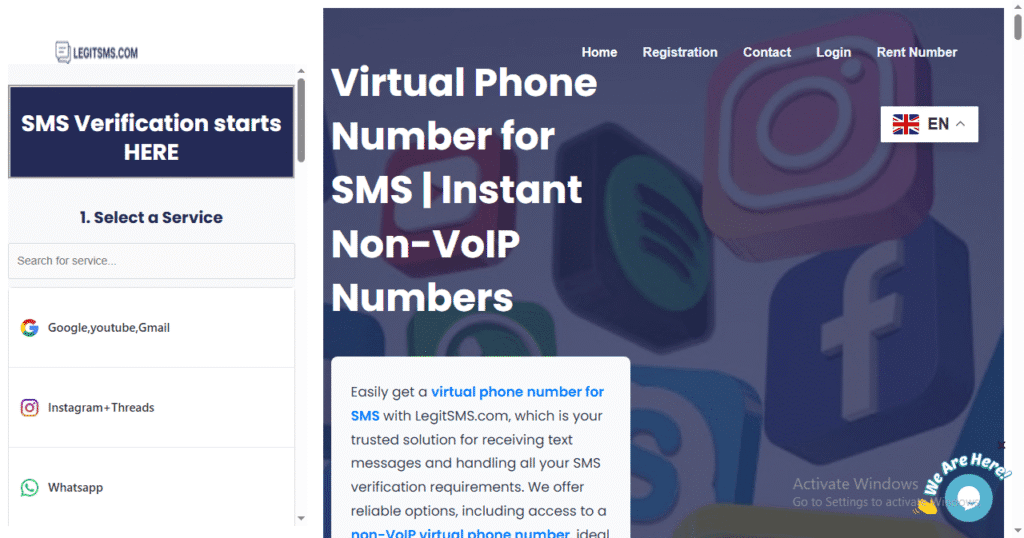
Create a free account on LegitSMS.com.
You can deposit a minimum of $5 using your bank card, cryptocurrency, or other electronic payments like PayPal or Skrill. Funds are instantly added to your LegitSMS wallet.
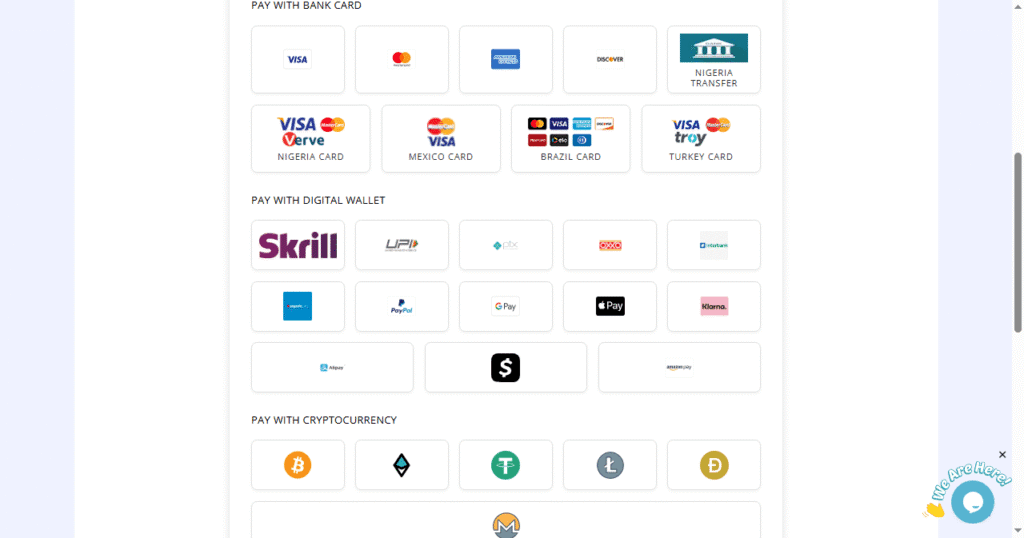
2. Choose the Service You Need
From the dashboard, pick the service you want to verify (e.g., Telegram, Paytm, or Gmail). If your preferred platform isn’t listed, choose “Any Other” and continue.
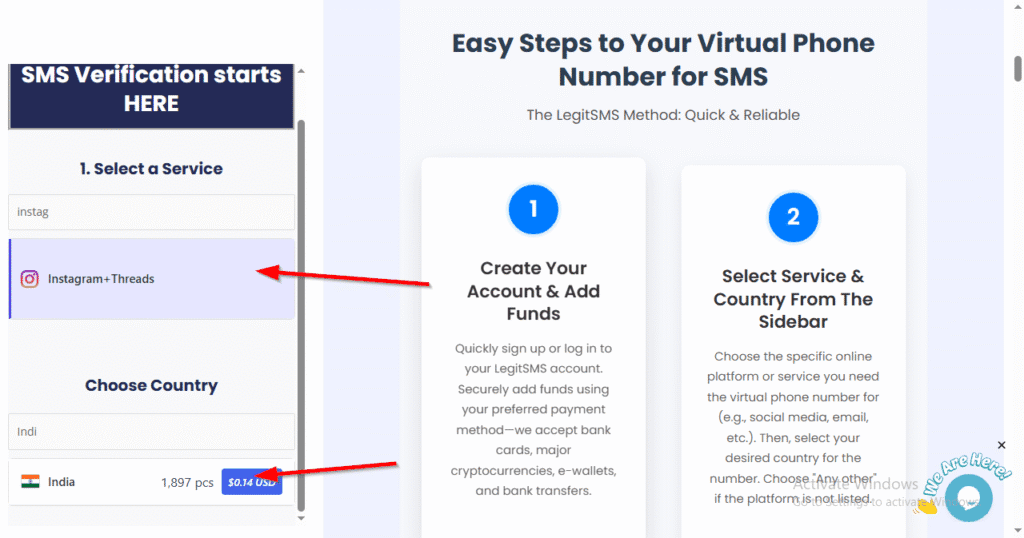
3. Select the Country
Click on India from the dropdown list. LegitSMS will instantly generate a fresh number.
You can also explore other country-specific options like:
4. Receive the OTP Instantly
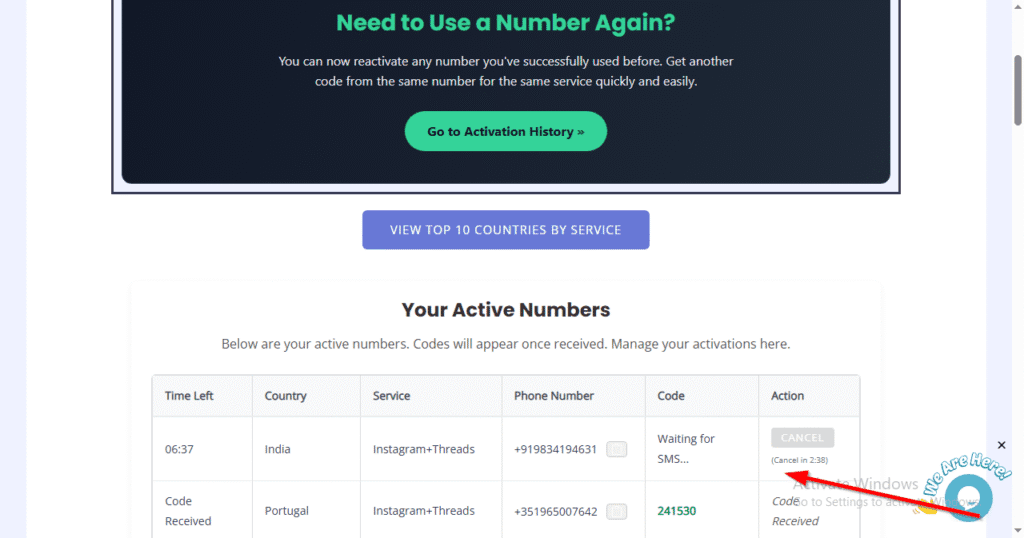
After entering the number on your app or website, LegitSMS will forward the OTP directly to your dashboard. If the message doesn’t arrive, the funds automatically return to your wallet. No need to contact support — it’s built into the system.
5. Reuse or Cancel the Number
If the OTP works successfully, you can reuse the same number to receive multiple SMS codes for that service. Don’t like the number? Simply cancel it and generate another one — it’s that easy.
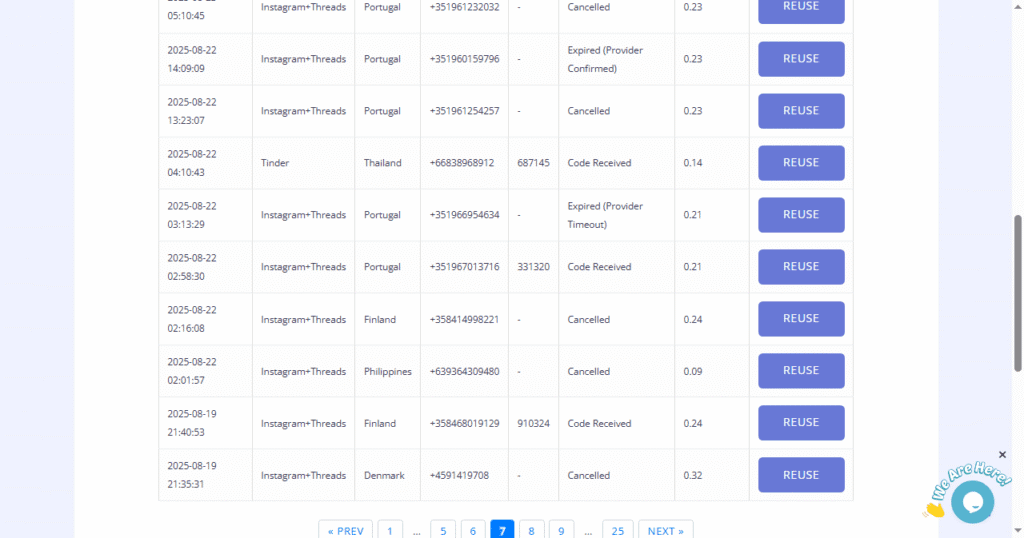
Why LegitSMS is the Most Reliable Indian OTP Platform
Unlike unreliable or free OTP websites, LegitSMS guarantees:
- Real, non-VoIP routes for better delivery rates
- Automatic refund if SMS isn’t received
- Instant number generation (no waiting or manual approval)
- Global support across 170+ countries
- Secure payment methods including crypto
Users who often can’t receive SMS verification codes from other providers find LegitSMS far more dependable.
For example, a user testing multiple Indian payment apps verified every account successfully within minutes — no delays, no repeated failures.
Top Platforms You Can Verify Using LegitSMS
With LegitSMS, you can use an Indian number for dozens of major services, including:
- Google and Gmail (read: Receive SMS Online for Gmail)
- WhatsApp and Telegram
- Paytm, PhonePe, and Razorpay
- Amazon, Flipkart, and Zomato
- Facebook, Instagram, and Twitter
Each service is tested for delivery reliability, so your Indian OTP arrives quickly every time.
External Expert Insights
To understand how OTP verification impacts security, check these helpful resources:
- Google’s official page on SMS-based 2-Step Verification
- TechRadar: Best practices for online privacy in 2025
- Forbes on the importance of secure authentication methods
- Paytm’s security policy regarding OTP verification
These sources highlight the growing global importance of SMS-based authentication — and why choosing a trusted service like LegitSMS matters.
FAQs About Indian OTP and Virtual Numbers
1. Is it legal to use Indian virtual numbers for OTP?
Yes. Using virtual numbers is completely legal for general online verification, provided you follow platform policies and local telecom regulations.
2. Why do free OTP sites often fail?
Most free OTP sites use blacklisted VoIP numbers, which are rejected by major services. They also recycle numbers, putting your data at risk.
3. Can I reuse my LegitSMS number?
Yes. If your number works successfully, you can reuse it to receive multiple OTPs for the same app.
4. What if the OTP doesn’t arrive?
If no message is received, LegitSMS automatically refunds your balance. You can then generate a new number or try another country.
5. How many countries does LegitSMS support?
Over 170 countries, including India, the USA, Canada, Nigeria, and the UK.
Final Thoughts: Stop Struggling with Indian OTP
If you’ve been wasting hours trying to find a reliable Indian OTP service, you can finally stop searching. LegitSMS provides instant, safe, and working numbers for all your verifications — no scams, no hidden fees.
Get started in less than two minutes:
- Sign up at LegitSMS.com
- Deposit a minimum of $5
- Select your platform and country
- Receive your OTP instantly
Your verification journey doesn’t need to be complicated. With LegitSMS, you get speed, privacy, and reliability — every single time.
Start Receiving Indian OTP Today with LegitSMS.com!
LegitSMS is your trusted partner for secure and fast OTP verifications across 170+ countries. Join thousands of users who’ve simplified their online verifications — and never worry about failed OTPs again.
